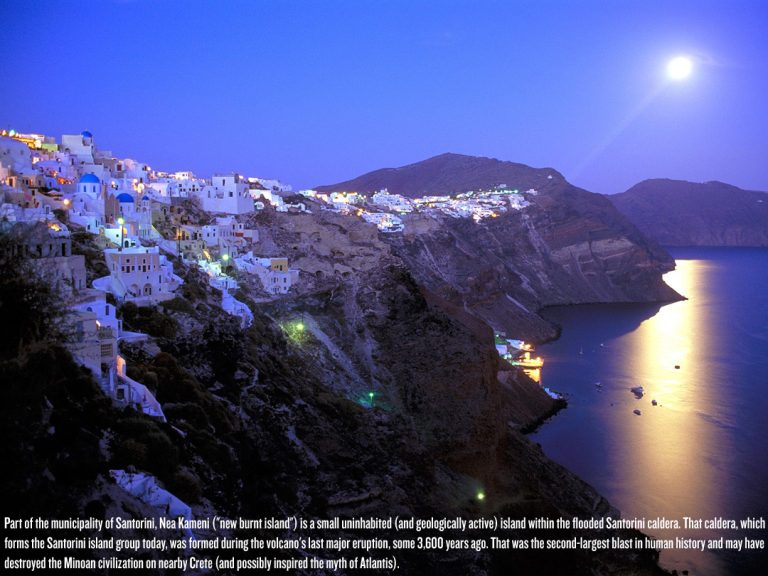Santorini is the crown jewel of the Greek Islands, and was born 3,600 years ago by a volcanic blast. Now scientists are watching the island closely because of a significant “magma event” which took place beneath the island recently. Santorini residents and tour guides have been noticing some very strange behavior lately: wine glasses occasionally clinked and rattled, and guides were smelling some rancid gases around the island as well.
Yesterday National Geographic reported that satellite radar technology has revealed the source of the symptoms. Brian Handwerk of National Geographic News writes, “A rush of molten rock swelled the magma chamber under the volcano by some 13 to 26 million cubic yards (10 to 20 million cubic meters)—about 15 times the volume of London’s Olympic Stadium—between January 2011 and April 2012. The ballooning chamber even forced parts of the island’s surface to rise upward and outward by 3 to 5.5 inches (8 to 14 centimeters).”
The volcano beneath Santorini has been quiet for 60 years, and although these symptoms do not suggest an “imminent” explosion, experts warn that an eruption may be years or decades away. University of Oxford vulcanologist David Pyle told National Geographic, “The tough question is that we aren’t any closer to knowing if, or when, the next lava eruption might happen,” likening the recent swelling to someone blowing a big breath into an invisible balloon. “We don’t know how small or big the balloon is, and we don’t know whether just one more breath will be enough for it to pop or not.” There are numerous complex details to this story and you can read it in full by visiting National Geographic. The Santorini volcano puts Vesuvius to shame. Its eruption around 1630 B.C. is the second largest in human history.



